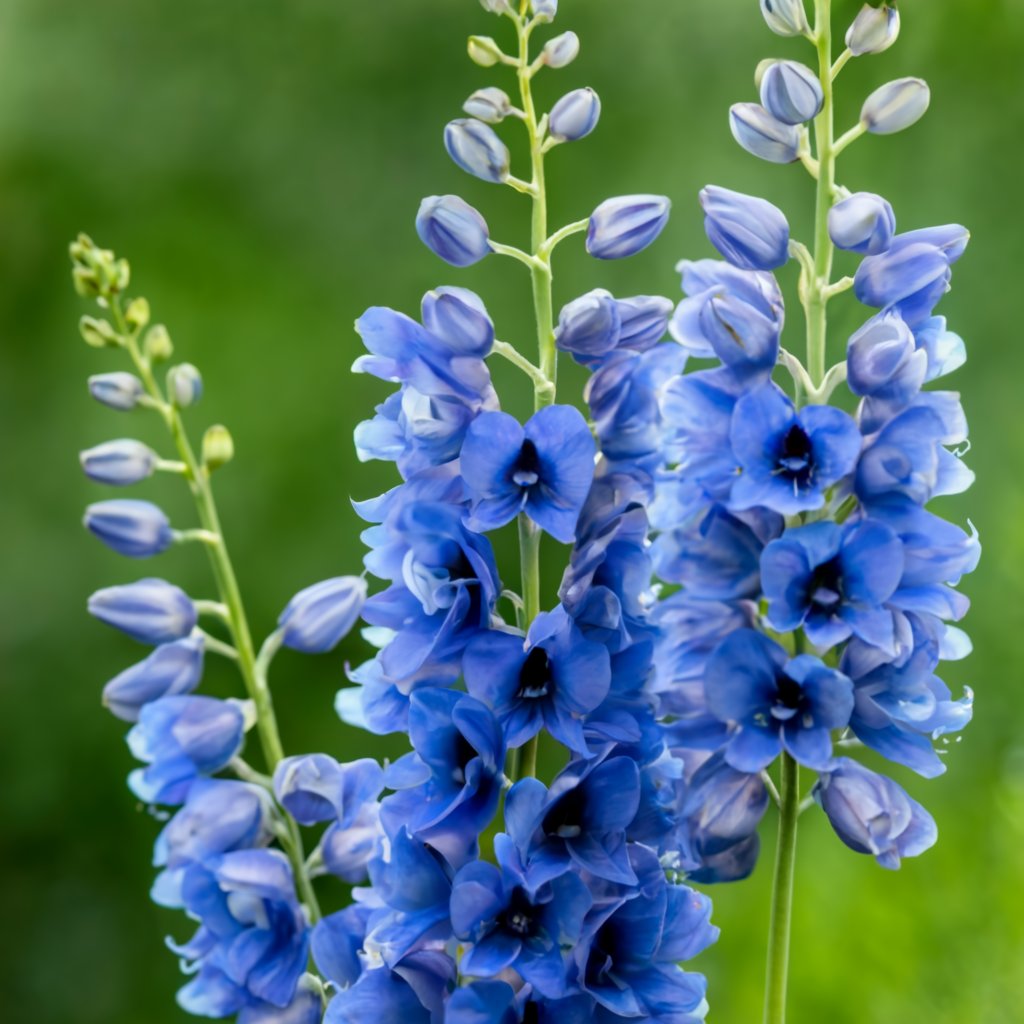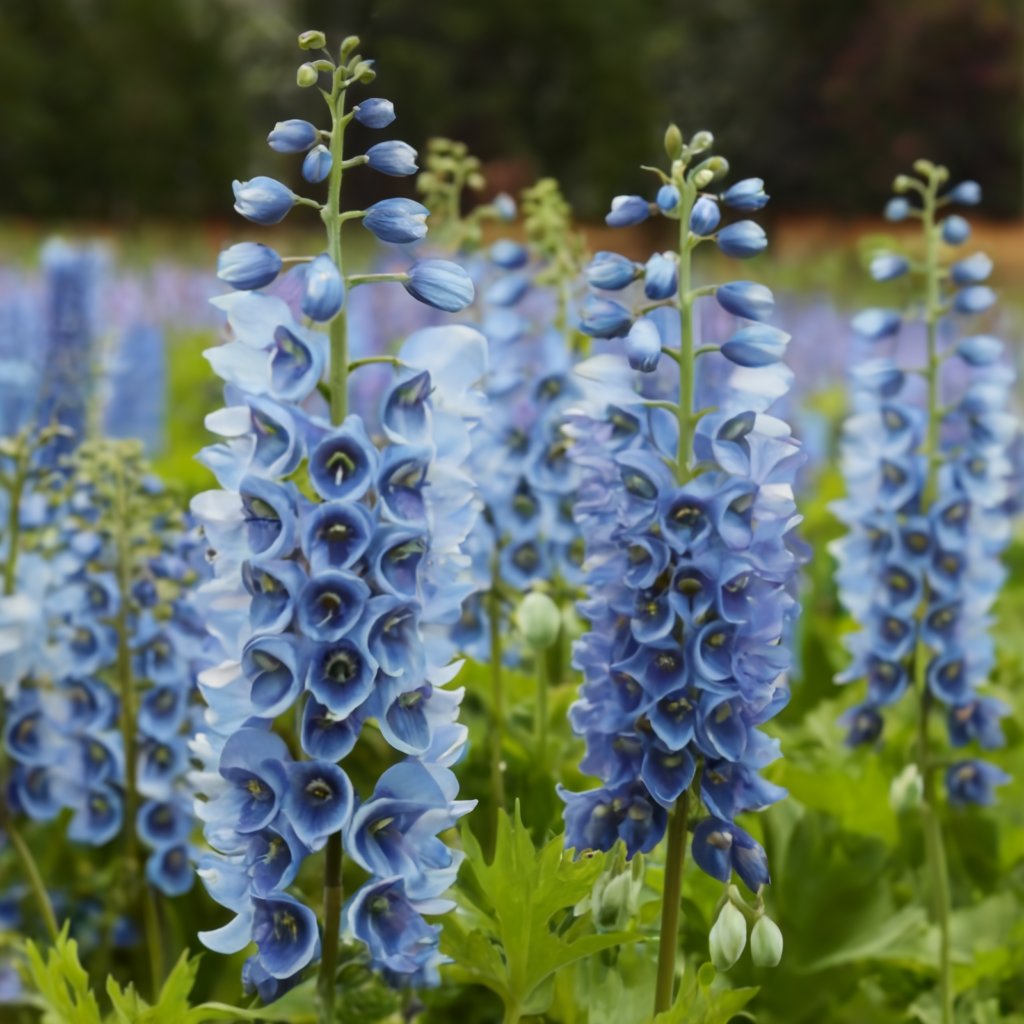
Delphiniums, with their regal spires adorned in breathtaking hues, have captivated gardeners for centuries. Often nicknamed “the larkspur’s stately cousin,” these flowering giants add a touch of drama and elegance to any garden. But their imposing presence belies a surprisingly accessible nature. With a little know-how, you too can cultivate these magnificent blooms, transforming your plot into a kingdom of soaring blue, purple, white, or even bi-colored wonders.
This guide will be your compass on the journey to cultivating gorgeous delphiniums, from the tiny seed to the moment their majestic spikes pierce the sky.
This post may have affiliate links. This means that sometimes when you click a link on our site and make a purchase on Amazon, we may earn a small commission at no additional cost to you. We only recommend products we truly believe in, and your support helps keep us running!
Seeding Dreams: Sowing the Seeds for Success

While delphiniums can be grown from commercially available transplants, there’s a certain magic in nurturing them from seed. Sowing your seeds allows you to select specific varieties and witness their entire life cycle, from the first tentative sprout to the triumphant bloom.
Choosing the Right Seeds:
Delphinium seeds come in a dazzling array of colors, from classic sky blue to deep, velvety purple, and even playful bi-colored combinations. Select varieties suited to your climate and desired bloom time. Here are some factors to consider:
- Climate: Delphiniums generally thrive in cool-season climates. If you reside in a warmer region, opt for heat-tolerant varieties.
- Light: They prefer full sun but can tolerate some afternoon shade in hotter zones.
- Bloom Time: Early, mid-season, and late blooming varieties exist. Plan your succession for a continuous display of color throughout summer.
Planting Your Seeds:
The ideal time for sowing delphinium seeds depends on your climate. In colder zones with late springs, sow seeds indoors 6-8 weeks before the last frost. For warmer regions with mild winters, sow directly outdoors in fall or early spring.
Here’s a step-by-step guide for indoor sowing:
- Prepare the Seed Trays: Fill a shallow seed tray with a well-draining, sterile potting mix. Moisten the mixture slightly.
- Sow the Seeds: Scatter the tiny seeds thinly over the soil surface. Barely cover them with a fine layer of potting mix.
- Light and Moisture: Place the tray in a warm location receiving bright, indirect sunlight. Keep the soil consistently moist but not soggy.
- Germination and Growth: Seeds should germinate within 10-14 days. Once seedlings develop their first set of true leaves, thin them to allow for proper growth.
Transplanting Seedlings:
Once the risk of frost has passed and your outdoor temperatures consistently reach 50°F (10°C), it’s time to harden off your seedlings and transplant them to their permanent home in the garden.
The hardening-off process gradually acclimates indoor-grown plants to outdoor conditions. Expose them to increasing periods of outdoor light and temperature over 7-10 days.
When transplanting, choose a location with well-draining, fertile soil and full sun to partial shade. Space plants according to their mature size, typically 18-24 inches (45-60 cm) apart.
Nurturing Majesty: Providing the Perfect Environment
Now that your delphiniums are settled in the garden, it’s time to provide them with the care they need to thrive and produce those magnificent flower spikes.
Soil and Watering:
Delphiniums prefer well-draining, fertile soil rich in organic matter. Amend your planting bed with compost or aged manure before transplanting. Water regularly, especially during their first growing season, to maintain consistent moisture in the soil. However, avoid overwatering, as this can lead to root rot.
Feeding and Support:
For optimal growth and flower production, fertilize your delphiniums with a balanced fertilizer every 4-6 weeks during the growing season. As the flower stalks emerge, provide support with stakes or cages to prevent them from toppling under the weight of the blooms.
Deadheading and Pruning:
To encourage reblooming and maintain a tidy appearance, deadhead spent flowers by pinching them off just below the faded bloom head. After the first flush of flowers fades, consider cutting back the stems by half to promote a potential second round of blooms in late summer.
Potential Perils: Protecting Your Delphinium Paradise
While relatively low-maintenance, delphiniums can be susceptible to a few common garden pests and diseases. Here’s how to safeguard your precious plants:
- Slugs and Snails: These slimy menaces love to munch on delphinium foliage. Apply organic slug bait or create a barrier of crushed eggshells around your plants to deter them.
- Earwigs: These nocturnal insects can also damage leaves and flower buds. Try placing rolled-up newspaper tubes near your plants as earwig hideouts. Check them regularly and dispose of any captured pests.
- Powdery Mildew: This fungal disease manifests as white powdery spots on leaves. Promote good air circulation by providing adequate spacing between plants. Water at the base of the plant instead of overhead to prevent moisture buildup on leaves. In severe cases, apply a fungicide specifically labeled for powdery mildew.
The Majesty Unfurls: Enjoying the Rewards
With proper care and a little patience, your delphiniums will reward you with a breathtaking display of towering flower spikes. As the blooms unfurl, their vibrant colors will transform your garden into a captivating scene. Here are some tips to keep it flourishing:
- Companion Planting: Delphiniums pair beautifully with other summer bloomers like roses, phlox, and lilies. Their contrasting colors and textures create a stunning visual tapestry.
- Cutting for Bouquets: The majestic flower spikes make excellent cut flowers. To extend their vase life, cut stems early in the morning when the blooms are just beginning to open. Place them in a cool vase with fresh, clean water and enjoy their beauty indoors.
